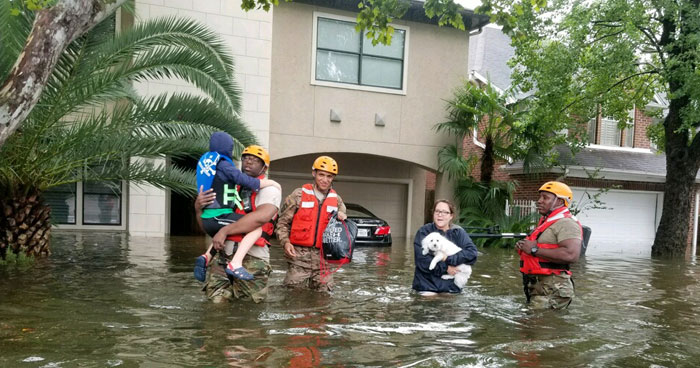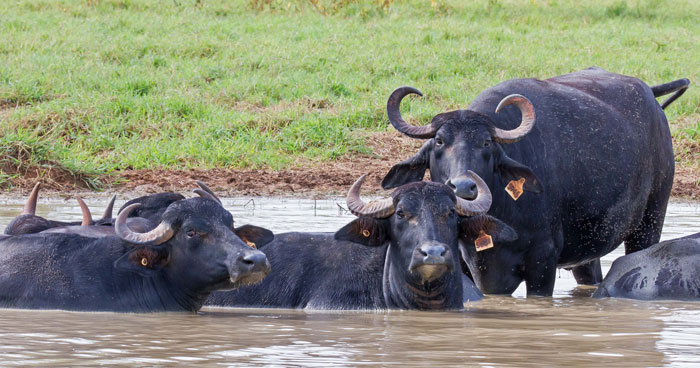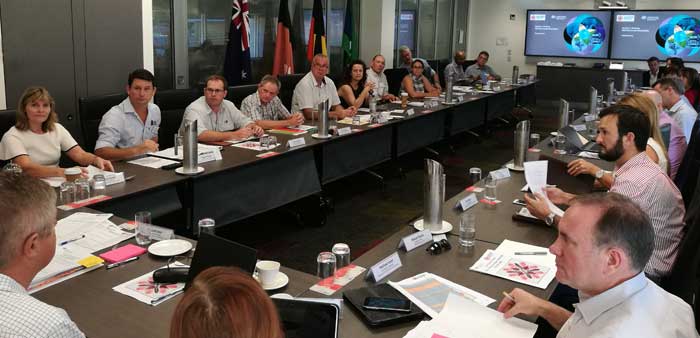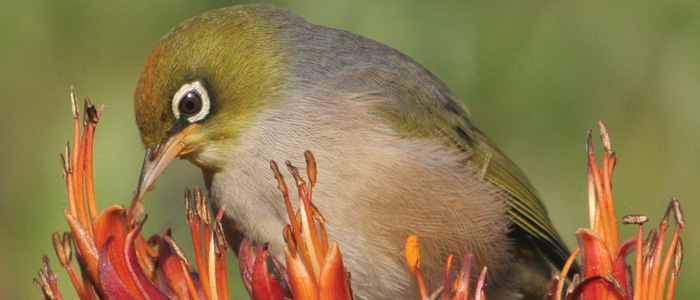
Vote 1: Stop invasive species in Queensland
Along with land clearing, invasive species are the major threat to wildlife in Queensland. Yet biosecurity has been missing from Queensland election headlines.

Along with land clearing, invasive species are the major threat to wildlife in Queensland. Yet biosecurity has been missing from Queensland election headlines.

Australia should seize the opportunity to better protect itself from dangerous new invasive species by adopting the recommendations of an independent review of the biosecurity system.

A campaign to fix the country’s leaky environmental borders and keep dangerous new environmental pests and diseases out. Send your message to the Deputy Prime Minister today.

The release of our report Norfolk Island: Protecting an Ocean Jewel, sets a path for reversing the decline of many threatened species on the island and eradicating harmful invaders.

After exhaustive research, one of Australia’s most cherished island sanctuaries Lord Howe Island is about to hit go on its rat eradication project.

The terrible destructive force of Hurricane Harvey made headlines not just for its human toll, but also for forcing fire ants out of their nests. Brisbane expat Jennifer Singfield tells us what it’s like living with fire ants.

The introduction of new crops or livestock can go spectacularly wrong. Question is, are those responsible for promoting new crops and livestock in Australia showing enough caution?

A review of Australia’s biosecurity arrangements has highlighted the need for much greater focus on protecting the natural environment from invasive species.

New research has found that almost nowhere in Australia is safe from growing feral deer numbers, with future mapping showing the animals could occupy most of the continent, including the interior.

A Senate environment committee that endorsed the commercial use of Tasmanian feral bumblebees seemed oblivious to the serious impacts this invasive species can cause.

A spate of fire ant discoveries in Queensland has set alarm bells ringing, but instead we should treat them as a sign the new eradication program is beginning to hit its straps.

Environmental biosecurity might still be a mouthful for most Australians, but it is gaining traction within government circles, and needs to become a much greater focus when we talk about protecting the nation from future environmental threats.

On Wednesday, 26 July, Australia’s agriculture ministers signed off on a new, $411 million eradication program. Fire ant fight 2.0 is a fight we must win.

A five-year review could shake-up Australia’s biosecurity arrangements, finally putting environmental pests and diseases on a par with agricultural and human health threats.

Tick, tick, tick. That’s the sound of invasive browsing ants, an environmental time bomb if they have escaped eradication efforts in Darwin.

Along with land clearing, invasive species are the major threat to wildlife in Queensland. Yet biosecurity has been missing from Queensland election headlines.

Australia should seize the opportunity to better protect itself from dangerous new invasive species by adopting the recommendations of an independent review of the biosecurity system.

A campaign to fix the country’s leaky environmental borders and keep dangerous new environmental pests and diseases out. Send your message to the Deputy Prime Minister today.

The release of our report Norfolk Island: Protecting an Ocean Jewel, sets a path for reversing the decline of many threatened species on the island and eradicating harmful invaders.

After exhaustive research, one of Australia’s most cherished island sanctuaries Lord Howe Island is about to hit go on its rat eradication project.

The terrible destructive force of Hurricane Harvey made headlines not just for its human toll, but also for forcing fire ants out of their nests. Brisbane expat Jennifer Singfield tells us what it’s like living with fire ants.

The introduction of new crops or livestock can go spectacularly wrong. Question is, are those responsible for promoting new crops and livestock in Australia showing enough caution?

A review of Australia’s biosecurity arrangements has highlighted the need for much greater focus on protecting the natural environment from invasive species.

New research has found that almost nowhere in Australia is safe from growing feral deer numbers, with future mapping showing the animals could occupy most of the continent, including the interior.

A Senate environment committee that endorsed the commercial use of Tasmanian feral bumblebees seemed oblivious to the serious impacts this invasive species can cause.

A spate of fire ant discoveries in Queensland has set alarm bells ringing, but instead we should treat them as a sign the new eradication program is beginning to hit its straps.

Environmental biosecurity might still be a mouthful for most Australians, but it is gaining traction within government circles, and needs to become a much greater focus when we talk about protecting the nation from future environmental threats.

On Wednesday, 26 July, Australia’s agriculture ministers signed off on a new, $411 million eradication program. Fire ant fight 2.0 is a fight we must win.

A five-year review could shake-up Australia’s biosecurity arrangements, finally putting environmental pests and diseases on a par with agricultural and human health threats.

Tick, tick, tick. That’s the sound of invasive browsing ants, an environmental time bomb if they have escaped eradication efforts in Darwin.

Along with land clearing, invasive species are the major threat to wildlife in Queensland. Yet biosecurity has been missing from Queensland election headlines.

Australia should seize the opportunity to better protect itself from dangerous new invasive species by adopting the recommendations of an independent review of the biosecurity system.

A campaign to fix the country’s leaky environmental borders and keep dangerous new environmental pests and diseases out. Send your message to the Deputy Prime Minister today.

The release of our report Norfolk Island: Protecting an Ocean Jewel, sets a path for reversing the decline of many threatened species on the island and eradicating harmful invaders.

After exhaustive research, one of Australia’s most cherished island sanctuaries Lord Howe Island is about to hit go on its rat eradication project.

The terrible destructive force of Hurricane Harvey made headlines not just for its human toll, but also for forcing fire ants out of their nests. Brisbane expat Jennifer Singfield tells us what it’s like living with fire ants.

The introduction of new crops or livestock can go spectacularly wrong. Question is, are those responsible for promoting new crops and livestock in Australia showing enough caution?

A review of Australia’s biosecurity arrangements has highlighted the need for much greater focus on protecting the natural environment from invasive species.

New research has found that almost nowhere in Australia is safe from growing feral deer numbers, with future mapping showing the animals could occupy most of the continent, including the interior.

A Senate environment committee that endorsed the commercial use of Tasmanian feral bumblebees seemed oblivious to the serious impacts this invasive species can cause.

A spate of fire ant discoveries in Queensland has set alarm bells ringing, but instead we should treat them as a sign the new eradication program is beginning to hit its straps.

Environmental biosecurity might still be a mouthful for most Australians, but it is gaining traction within government circles, and needs to become a much greater focus when we talk about protecting the nation from future environmental threats.

On Wednesday, 26 July, Australia’s agriculture ministers signed off on a new, $411 million eradication program. Fire ant fight 2.0 is a fight we must win.

A five-year review could shake-up Australia’s biosecurity arrangements, finally putting environmental pests and diseases on a par with agricultural and human health threats.

Tick, tick, tick. That’s the sound of invasive browsing ants, an environmental time bomb if they have escaped eradication efforts in Darwin.
Get our blog the Feral Herald delivered to your inbox.
Our protected areas are being trashed, trampled, choked and polluted by an onslaught of invaders. Invasive species are already the overwhelming driver of our animal extinction rate, and are expected to cause 75 of the next 100 extinctions.
But you can help to turn this around and create a wildlife revival in Australia.
From numbats to night parrots, a tax-deductible donation today can help defend our wildlife against the threat of invasive weeds, predators, and diseases.
As the only national advocacy environment group dedicated to stopping this mega threat, your gift will make a big difference.
A silent crisis is unfolding across Australia. Every year, billions of native animals are hunted and killed by cats and foxes. Fire ants continue to spread and threaten human health. And the deadly strain of bird flu looms on the horizon. Your donation today will be used to put the invasive species threat in the media, make invasive species a government priority, ensure governments take rapid action to protect nature and our remarkable native wildlife from invasives-led extinction, death and destruction.
If you are having trouble submitting a form, please read this guide.
Please fill out the following form and one of our team will be in contact to assist as soon as possible. Please make sure to include any helpful information, such as the device you were using (computer, tablet or mobile phone) and if known, your browser (Mozilla Firefox, Chrome, Safari etc)
"*" indicates required fields
Dear Project Team,
[YOUR PERSONALISED MESSAGE WILL APPEAR HERE.]
I support the amendment to the Kosciuszko National Park Wild Horse Heritage Management Plan to allow our incredible National Parks staff to use aerial shooting as one method to rapidly reduce feral horse numbers. I want to see feral horse numbers urgently reduced in order to save the national park and our native wildlife that live there.
The current approach is not solving the problem. Feral horse numbers have rapidly increased in Kosciuszko National Park to around 18,000, a 30% jump in just the past 2 years. With the population so high, thousands of feral horses need to be removed annually to reduce numbers and stop our National Park becoming a horse paddock. Aerial shooting, undertaken humanely and safely by professionals using standard protocols, is the only way this can happen.
The government’s own management plan for feral horses states that ‘if undertaken in accordance with best practice, aerial shooting can have the lowest negative animal welfare impacts of all lethal control methods’.
This humane and effective practice is already used across Australia to manage hundreds of thousands of feral animals like horses, deer, pigs, and goats.
Trapping and rehoming of feral horses has been used in Kosciuszko National Park for well over a decade but has consistently failed to reduce the population, has delayed meaningful action and is expensive. There are too many feral horses in the Alps and not enough demand for rehoming for it to be relied upon for the reduction of the population.
Fertility control as a management tool is only effective for a small, geographically isolated, and accessible population of feral horses where the management outcome sought is to maintain the population at its current size. It is not a viable option to reduce the large and growing feral horse population in the vast and rugged terrain of Kosciuszko National Park.
Feral horses are trashing and trampling our sensitive alpine ecosystems and streams, causing the decline and extinction of native animals. The federal government’s Threatened Species Scientific Committee has stated that feral horses ‘may be the crucial factor that causes final extinction’ for 12 alpine species.
I recognise the sad reality that urgent and humane measures are necessary to urgently remove the horses or they will destroy the Snowies and the native wildlife that call the mountains home. I support a healthy national park where native species like the Corroboree Frog and Mountain Pygmy Possum can thrive.
Dear Project Team,
[YOUR PERSONALISED MESSAGE WILL APPEAR HERE.]
I support the amendment to the Kosciuszko National Park Wild Horse Heritage Management Plan to allow our incredible National Parks staff to use aerial shooting as one method to rapidly reduce feral horse numbers. I want to see feral horse numbers urgently reduced in order to save the national park and our native wildlife that live there.
The current approach is not solving the problem. Feral horse numbers have rapidly increased in Kosciuszko National Park to around 18,000, a 30% jump in just the past 2 years. With the population so high, thousands of feral horses need to be removed annually to reduce numbers and stop our National Park becoming a horse paddock. Aerial shooting, undertaken humanely and safely by professionals using standard protocols, is the only way this can happen.
The government’s own management plan for feral horses states that ‘if undertaken in accordance with best practice, aerial shooting can have the lowest negative animal welfare impacts of all lethal control methods’.
This humane and effective practice is already used across Australia to manage hundreds of thousands of feral animals like horses, deer, pigs, and goats.
Trapping and rehoming of feral horses has been used in Kosciuszko National Park for well over a decade but has consistently failed to reduce the population, has delayed meaningful action and is expensive. There are too many feral horses in the Alps and not enough demand for rehoming for it to be relied upon for the reduction of the population.
Fertility control as a management tool is only effective for a small, geographically isolated, and accessible population of feral horses where the management outcome sought is to maintain the population at its current size. It is not a viable option to reduce the large and growing feral horse population in the vast and rugged terrain of Kosciuszko National Park.
Feral horses are trashing and trampling our sensitive alpine ecosystems and streams, causing the decline and extinction of native animals. The federal government’s Threatened Species Scientific Committee has stated that feral horses ‘may be the crucial factor that causes final extinction’ for 12 alpine species.
I recognise the sad reality that urgent and humane measures are necessary to urgently remove the horses or they will destroy the Snowies and the native wildlife that call the mountains home. I support a healthy national park where native species like the Corroboree Frog and Mountain Pygmy Possum can thrive.